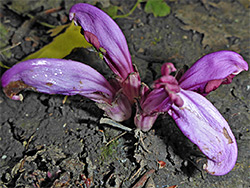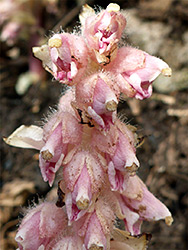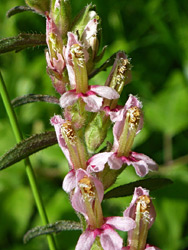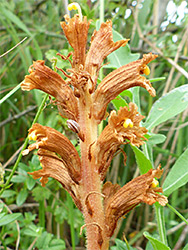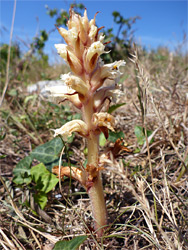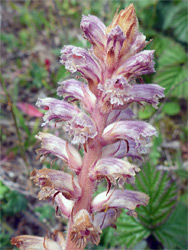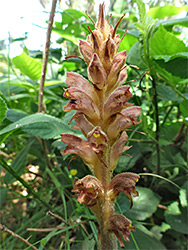Most members of the orobanchaceae, or broomrape family are at least partly parasitic, using the roots of other plants for nutrition, and many of them lack leaves. The family includes several dozen genera transferred from the scrophulariaceae. Flowers are bilaterally symmetric; the corolla is tubular, with two lips, the upper two-lobed, and often pouched, the lower three-lobed. Contained within are four fertile stamens, and sometimes, an infertile stamen, the staminode.


